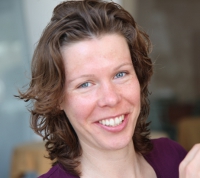The Tomorrow of Neglected Tropical Diseases
Guest blogger Dr Rachel ter Horst, medical advocacy advisor at Médecins Sans Frontière, discusses the recent Uniting to Combat Neglected Tropical Diseases event in London.
Four acts in 90 minutes. A tight script that does not leave time for clapping. Nine men in dark suits and one woman on stage. That one woman is Margaret Chan, Director General of WHO. One of the men is Bill Gates. The stage is Uniting to Combat Neglected Tropical Diseases (NTDs), an event convened by WHO and the Bill and Melinda Gates Foundation.
The first act: ‘Setting the stage’. This is the most comprehensive, coordinated action ever to address NTDs. “I have never seen so many competitors working together”, said Margaret Chan, referring mainly to the 13 large pharmaceutical companies present, but possibly also referring to the bilateral and multilateral donors. The prospect of elimination appeals to many.
An animation lays out what it is we are combating; ten circles, representing ten ancient parasitic infections which affect over 1 billion of the poorest and most neglected people. The ten circles move into two groups; seven versus three. For the seven – Guinea worm (eradication), lymphatic filariasis (elimination), leprosy (elimination), trachoma (elimination), schistosomiasis (control), soil-transmitted helminthes (control) and river blindness (control) – the battle can be geared up relatively easily. The tools and strategies already exist and for most of the seven these are simple and among the most cost-effective interventions in public health: periodic mass drug administration of cheap tablets and improving water and sanitation. But the other three, visceral leishmaniasis, human African trypanosomiasis (sleeping sickness) and Chagas disease, require new tools and strategies to make elimination/control possible.
In Médecins Sans Frontières’ medical programmes we see the need for these new tools and strategies every day: for rapid diagnostic tests, oral effective treatments and support to heavily under-resourced national control programmes. For sleeping sickness in particular, endemic countries are almost all failed and insecure states. ‘Sleeping sickness lives in the last village’, as a member of a national control programme in central Africa once said to my colleague. The national sleeping sickness programmes in most central African countries have few staff members, and worse, they can work only in parts of the year when there is money for fuel, transport and salaries. For sleeping sickness to be eliminated, enhanced research and development (R&D) and programmatic support along with access to current drugs are necessary. The actors at the London conference were offering only the latter. Now is the time to address the reality. It is urgent.
Act two featured making progress with existing tools, while act three ushered in innovation and new tools. ‘There is a today and there is a tomorrow’, said a CEO of a large pharmaceutical company. Today has a huge unmet need. Tomorrow is where R&D comes in. And, as another CEO said, ‘here is where the secrets are’. Indeed. The commitment made at the event by 13 large pharmaceutical companies to share and open up data and compound libraries is welcome news. But more attention went to announcements on branded drug donations; several existing donations will be increased or extended until 2020. Noble and useful actions – that should be seen in perspective. For example, MSD has, since 1981, annual sales of ivermectin for veterinary use of about $1 billion. Perhaps it is only fair to make it free for humans? For a few drugs, generic production would be better. No word on that in the script, though it was generic production (only) that made sustained and dramatic scale-up of access to antiretroviral treatment for HIV possible.
The last act: ‘Realizing the 2020 goals’. The story here was how to connect drugs and people, a simplified version of health systems strengthening; a score card needed to measure progress and impact; how to reach those most in need; the need to engage countries and coordination by ministries of health; creating a critical mass and tipping point. More questions than answers, but fair enough, this is just the start.
So, here is where we are. A common call to action and a road map to elimination and control of ten NTDs by 2020. History in the making, I hope. And I hope that the remaining essential steps will be executed with the same enthusiasm: include companies who develop diagnostic tools, get the political commitment of endemic countries, steer and heavily invest in national NTD control programmes, establish strong leadership of the initiative, measure progress and impact, build capacity to sustain the successes, and keep focus.
Rachel ter Horst is a Dutch physician who has worked for Médecins sans Frontières since 2003. She is currently serving as a medical advocacy advisor, based in Amsterdam.


[…] the news, including the fact that some key questions seem to be neglected. An MSF Access campaign poston the Plos ‘Speaking of Medicine’ blog also dwells on the […]
[…] the news, including the fact that some key questions seem to be neglected. An MSF Access campaign poston the Plos ‘Speaking of Medicine’ blog also dwells on the […]